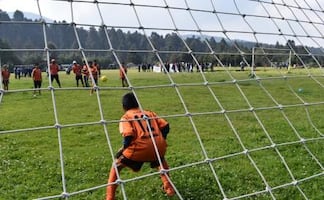After the 43 Ayotzinapa students went missing on September 26, 2014 , the now-extinct Attorney General's Office (PGR) had to provide some answers after society demanded justice.
In October 2014, Patricio Reyes Landa , known as “El Pato,” was at the headquarters of the Assistant Attorney General for Special Investigations and Organized Crime (SEIDO) . He was one of the first to be detained for the Ayotzinapa case and the PGR considered him as one of the main pieces for the investigation .
While Patricio Reyes was at the SEIDO , there were two collaborating witnesses present, who worked for Los Zetas cartel and whose identities and their collaboration with the PGR was corroborated by EL UNIVERSAL.
Then Tomás Zerón de Lucio , the former head of the Criminal Investigation Agency (AIC) , asked the two people who collaborated with the PGR between 2010 and 2015, “How do you get rid of the bodies ?.”
The two witnesses said that “ Los Zetas dissolved the bodies (using) acid or diesel , they put them (inside plastic containers) when they are already dismembered and they move them around so that they dissolve and only the ashes remain.”
Tomás Zerón
asked Patricio Reyes if he hardly heard the answer, while he was being tortured by AIC officials. The two witnesses saw how the officials were hitting Patricio Reyes “on the head, gave him electric shocks , and asphyxiated him .”
Both witnesses told EL UNIVERSAL that Patricio Reyes, who has been released from prison after it was revealed that he had been tortured , was sitting on a metallic chair, handcuffed , and had shackles on his feet.
Tomás Zerón
allegedly told Patricio Reyes : “That is what you're going to say,” who quietly said: “yes boss, yes boss.”
These instructions were the basis of what would become the “ historical truth ” about the Ayotzinapa case.
“[ Patricio Reyes ] listened to what we said and then [ Tomás Zerón and Carlos Gómez Arrieta] told him that the most believable (version) was that the students had been calcined ,” said one of the witnesses.
The government's historical truth is based on the testimonies of Patricio Reyes, Jonathan Osorio Gómez, and Agustín García Reyes , who were the first to be arrested for the disappearance of the 43 students.
According to their statements, the students were murdered and then their bodies were burnt using diesel , tires , and other objects used to keep the fire alive at the Cocula dump . Then they allegedly threw the ashes into the San Juan river.
Nevertheless, after investigating the Ayotzinapa case for over one year, the Independent Experts Interdisciplinary Group (GIEI) said that there wasn't a fire at the dumpster on September 26-27.
F
urthermore, the Argentinian Team of Forensic Anthropology (EAFF) determined that the students weren't burnt at the dump, a version that contradicts the one released by the PGR .
According to the two witnesses, Patricio Reyes was tortured for almost an hour at the SEIDO headquarters .
One of the witnesses offered to give his statement to the Undersecretary of Human Rights, Population, and Migration , led by Alejandro Encinas , but they haven't received a response.
Five years after the disappearance of the 43 students, 77 out of the 142 people involved in the case have been released from jail .
gm
Noticias según tus intereses
[Publicidad]
[Publicidad]















